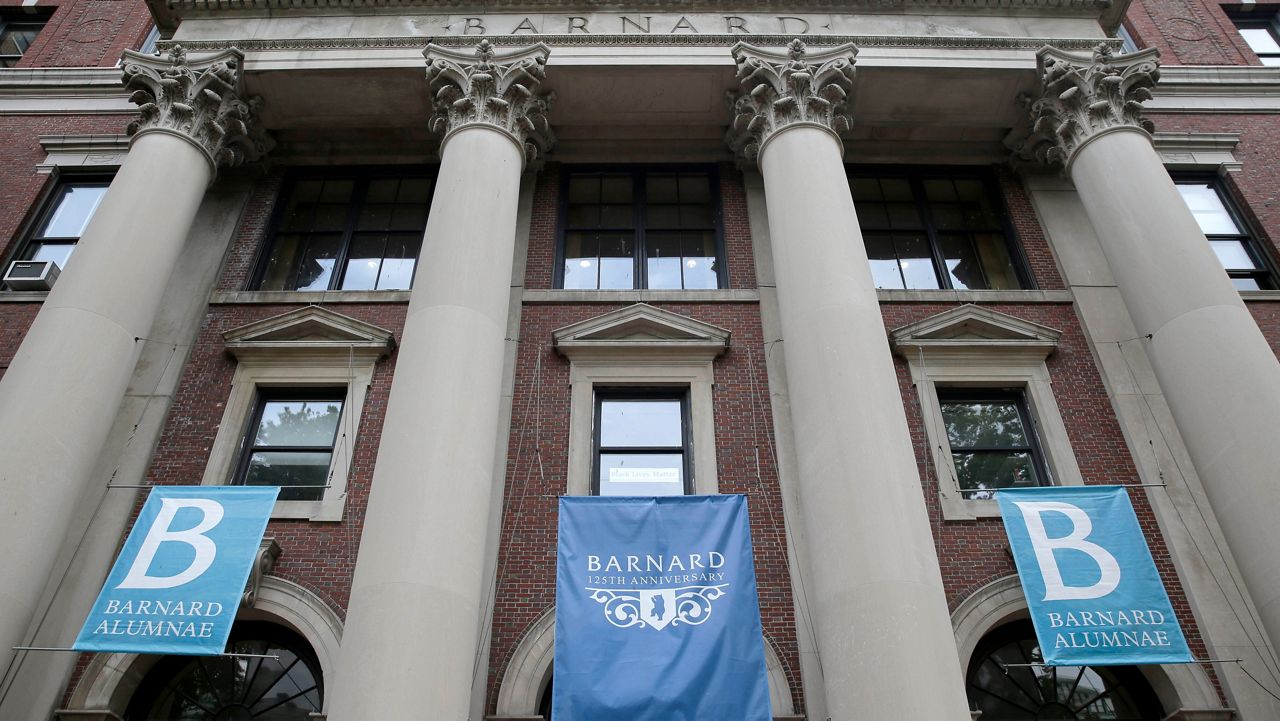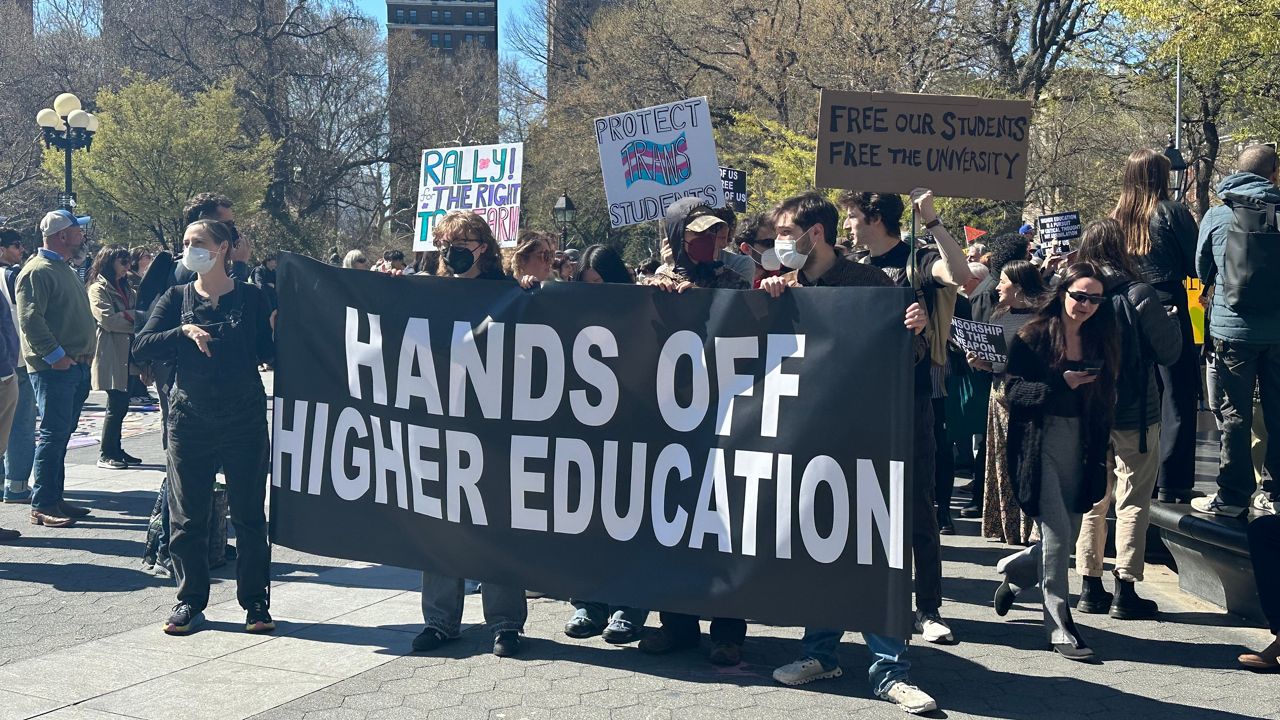In a classroom at P.S. 33 in Chelsea, students read a book about breakfast in Spanish, and then again, in English.
“A carrot!” teacher Esthephani Valdez exclaims. Then, in Spanish: “Zanahoria.”
The class was created out of sudden necessity. In early October, Principal Cindy Wang received a phone call on a Friday night.
“'Hey, on Monday morning, expect 14 families, new families, that are joining your school,'” Wang recalled. “And when Monday morning came, 14 went to 44, and then over the course of the next two weeks had about 62 families.”
They are the children of asylum seekers, now living in nearby hotels. Their arrival left the school scrambling to serve them. Last week, a third grader told NY1 she’d been helping her teachers translate.
The school has re-organized its existing staff, and brought on more, in order to set up two classes taught by bilingual teachers, Esthephani Valdez.
It’s been a challenge for Valdez in part because, despite being a Spanish speaker, she’s spent year teaching only in English. She’s now teaching a group of first and second graders using both languages.
“They’re so happy, especially working with me because they can connect with me, as we speak the same language. But they’re enjoying being in the classroom as well as learning, as we’re learning all together,” Valdez said.
The school has also launched a transitional bilingual class for fourth and fifth graders—in which students learn in both languages, but with the amount of English increasing as the students become more proficient.
It wasn't easy to pull off. It required juggling staff and getting additional money for the school's budget. Before the school year began, P.S. 33 actually lost one of its bilingual teachers, due to lower enrollment resulting in budget cuts.
“Because of this, now, increase of students, we were able to bring her back with the funding the department of education provided to us,” Wang said.
Still, not every new student is in a bilingual class. Some students are in general education classes taught in English and they’re visited by a teacher specializing in English as a new language who provides support in Spanish.
Wang says the school is looking to add more teachers who can provide that kind of support, as well as bilingual paraprofessionals. It isn’t easy, with a shortage of bilingual educators to choose from.
“There isn’t a large pool, so we’re relying on our teachers to outreach through other mechanisms, like social media—that has given us more candidates,” she said.
It’s not just language support: Students also need emotional support after a difficult journey to the city.
“Our teachers have been conducting home visits with families, and it really just lends an eye of listening to them and the journey that they’ve been on. And we’ve been mirroring the same thing in class, just giving kids a platform and opportunity throughout the day to talk about their experiences,” Wang said.
The school is also working with the Department of Health to bring in counselors and therapists.
“Something we’re doing is being very intentional about who is coming in— are they bilingual, do they have worldly experience?” Amanda Saechao, the community school director at P.S. 33, said.
The students’ sudden arrival has created some logistical challenges: classes and teachers have had to be reorganized, and some class sizes have grown. But the community has also rallied around the children, including organizing clothing drives to help the families, who have arrived with little.
“I remember that first day that they arrived. It was a cold and rainy day, and there were folks coming in flip flops,” Monia Mahmood, the school’s PTA co-president, said. “And to be able to provide them something more suitable to the New York CIty climate, it meant a lot to be able to even do that little bit for them.”
Students have done their part, too. A fourth grader printed out copies of a small dictionary to pass out in class.
“Spanish and English phrases, common phrases, greetings and introductions, things they can say to each other on the playground, like, ‘Do you want to play with me?’" Wang said. “That has been so touching and warming.”






_CGPK_CUNY_Student_Protest_Encampents_2025_CG_134055132_345)

_DNT_Columbia_Protest_CLEAN_FOR_APPROVAL)
